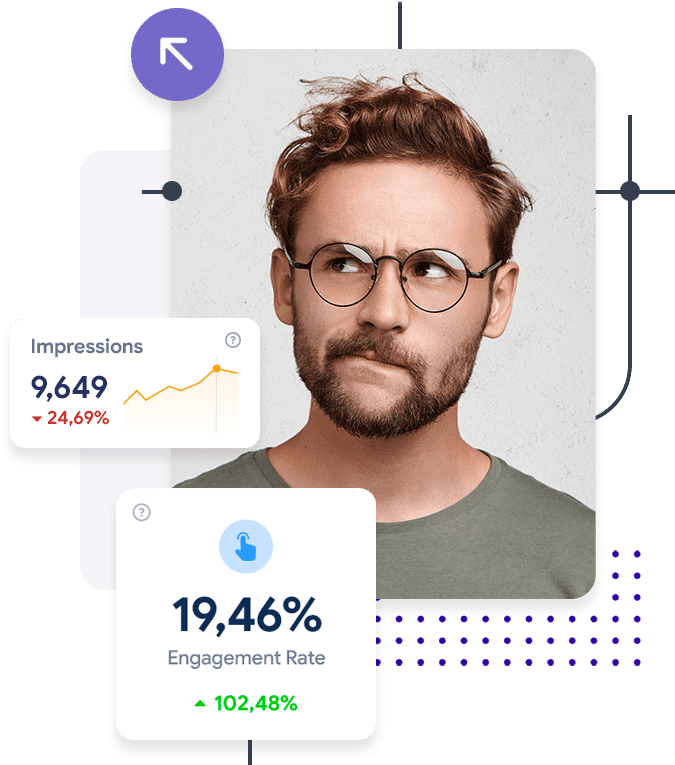What is LinkedIn Marketing Business?
Definition and Overview
LinkedIn Marketing Business refers to the strategic use of LinkedIn’s platform to promote a company’s products or services, build brand awareness, and engage with a professional audience. LinkedIn is a powerful tool for B2B marketing, offering unique opportunities to connect with decision-makers and industry leaders.
Importance of LinkedIn Marketing Business
LinkedIn Marketing Business is crucial for companies aiming to establish a strong online presence in the B2B sector. It allows businesses to reach a targeted audience, build professional relationships, and generate high-quality leads.
Benefits of LinkedIn Marketing Business
Increased Brand Awareness
LinkedIn Marketing Business helps in increasing brand visibility among professionals. By consistently sharing valuable content, businesses can establish themselves as industry leaders.
Authority Building
Establishing authority in your industry is essential for gaining trust and credibility. LinkedIn allows businesses to showcase their expertise through thought leadership content.
Networking Opportunities
LinkedIn is a hub for professional networking. It provides opportunities to connect with industry peers, potential clients, and partners.
Lead Generation
LinkedIn is a powerful platform for generating high-quality leads. By targeting specific industries and job titles, businesses can attract potential clients.
How to Set Up Your LinkedIn Business Page
Creating a Company Page
Creating a LinkedIn Company Page is the first step in establishing your LinkedIn Marketing Business presence. It allows you to showcase your brand and connect with your audience.
Optimizing Your LinkedIn Business Page
Custom URL
A custom URL makes your LinkedIn Business Page easier to find and share. It also enhances your brand’s professionalism.
Background Photo
A compelling background photo can make your LinkedIn Business Page more attractive and engaging.
Profile Sections
Optimizing your profile sections helps in providing comprehensive information about your business.
LinkedIn Marketing Best Practices
Use Hashtags
Hashtags increase the visibility of your posts by categorizing them under relevant topics.
Consistent Publishing Schedule
Consistency is key to maintaining engagement on LinkedIn. A regular posting schedule keeps your audience engaged and informed.
Varying Post Lengths
Mixing up the length of your posts can keep your audience engaged and cater to different preferences.
Sharing External Articles
Sharing relevant external articles can position your brand as a valuable resource for industry information.
LinkedIn Marketing Tips to Grow Your Business
Find Highly Targeted Customers
LinkedIn’s advanced search features allow you to find and connect with highly targeted customers.
Stay on Customers’ Radars
Regular engagement keeps your brand top-of-mind for your audience.
Grow Your Email Marketing List
LinkedIn can be a valuable tool for growing your email marketing list.
Post High-Quality Content
High-quality content is essential for engaging your audience and building credibility.
LinkedIn Advertising Options
Sponsored Content
Sponsored Content allows you to promote your posts to a targeted audience.
Sponsored Messaging
Sponsored Messaging enables you to send personalized messages directly to LinkedIn users.
Dynamic Ads
Dynamic Ads are personalized ads that appear in the LinkedIn feed.
Text Ads
Text Ads are simple, cost-effective ads that appear on the LinkedIn sidebar.
How to Use LinkedIn for Business and Marketing
Customize Public Profile URL
Customizing your public profile URL makes it easier for people to find and connect with you.
Add and Rearrange Profile Sections
Adding and rearranging profile sections helps in showcasing your skills and experience effectively.
Optimize for Search Engines
Optimizing your LinkedIn profile for search engines increases your visibility.
Become a Service Provider
Becoming a service provider on LinkedIn allows you to showcase your services and attract potential clients.
LinkedIn Networking Tips
Optimize Profile for Connection Requests
An optimized profile increases the chances of receiving connection requests.
Personalize Connection Requests
Personalizing connection requests increases the likelihood of acceptance.
Engage with LinkedIn Posts
Engaging with LinkedIn posts helps in building relationships and increasing visibility.
Join and Participate in LinkedIn Groups
Joining and participating in LinkedIn groups allows you to connect with like-minded professionals.
LinkedIn Marketing Strategy
Define Your Objectives
Defining your objectives is the first step in creating a successful LinkedIn marketing strategy.
Develop a Content Strategy
A well-planned content strategy is essential for engaging your audience and achieving your objectives.
Use Employee Advocacy
Employee advocacy can amplify your LinkedIn marketing efforts by leveraging your employees’ networks.
Measure and Improve Continuously
Measuring and improving your LinkedIn marketing efforts is crucial for long-term success.

